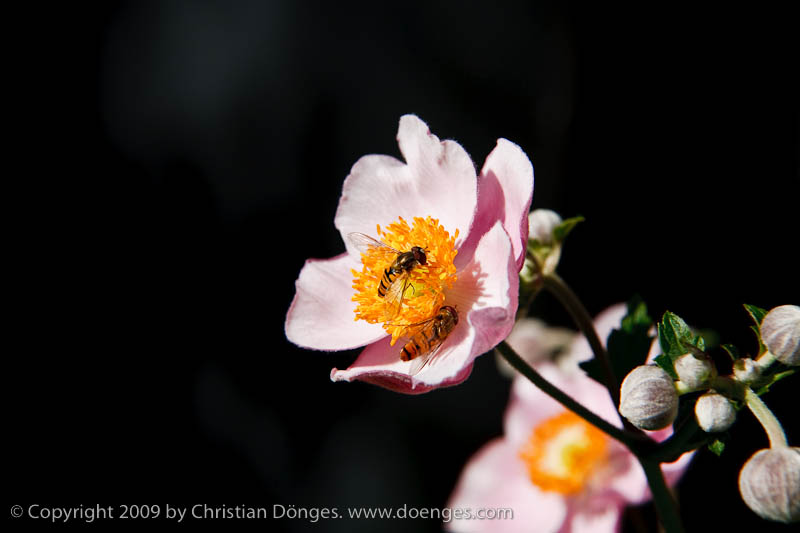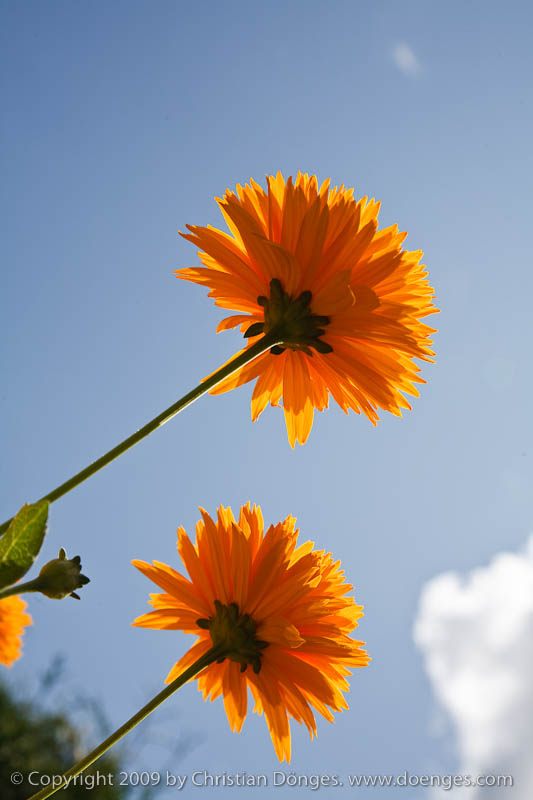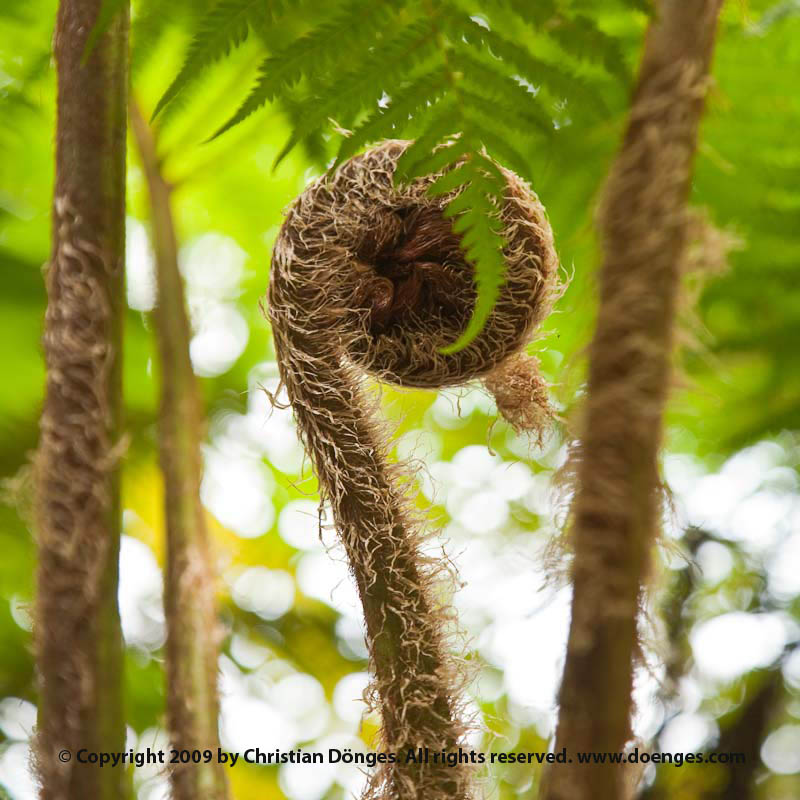As I said a few days ago, the anemones are currently popping up like crazy. It seems they are not the only ones, we’ve also got a huge number of mamelade flies:
As you can tell, a marmelade fly (Episyrphus balteatus) looks a bit like a solitary wasp, but it really is a hoverfly and therefore quite harmless. Harmless to everyone and everything but aphids (plant lice or greenflies), that is, which the larvae (would that be marmelade larvae?) are fond of eating.
For this reason the marmelade flies are quite welcome in my garden and I like to have them come around. In case you are wondering, they do not seem to have the habit of becoming annoying like their house fly cousins.
These two, incidentally, are both males. You can tell this because the eyes touch at the top of the head, which is unique to the males. Isn’t it cool what you can find out if you take an interest in what shows up in your pictures? 😉







